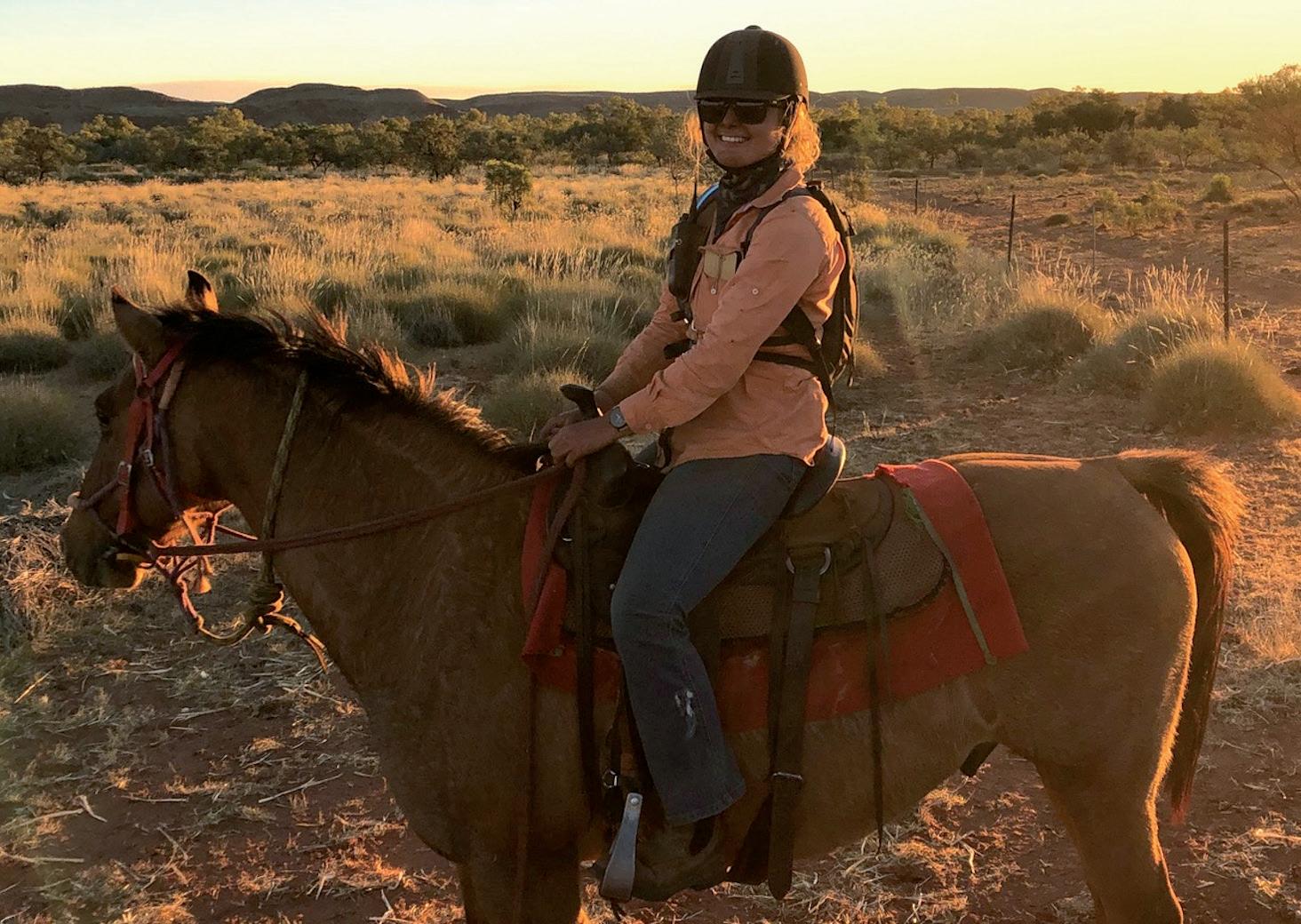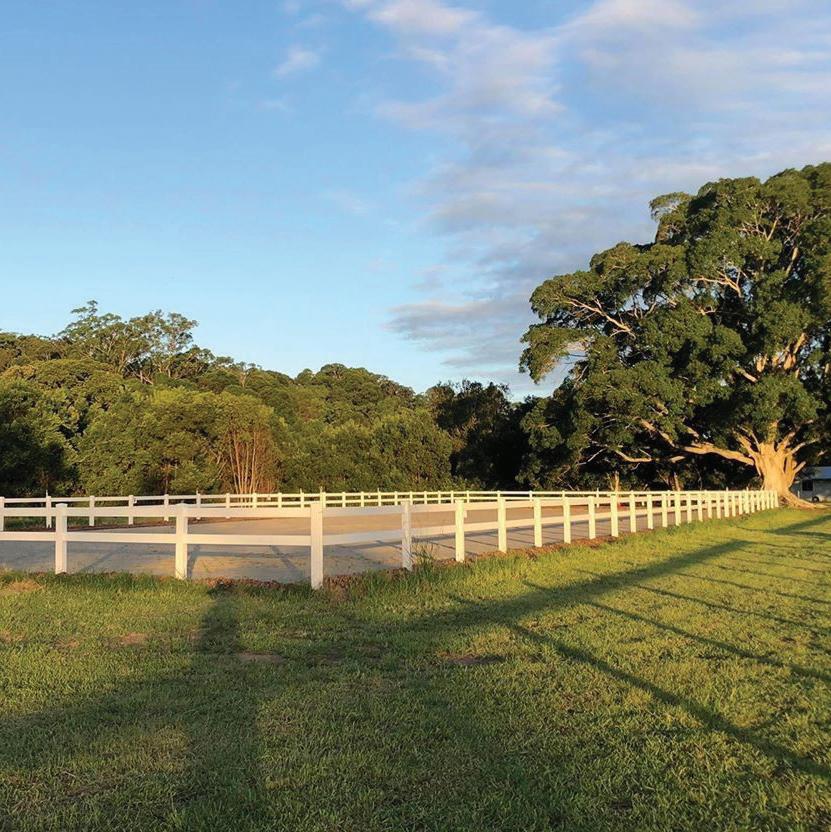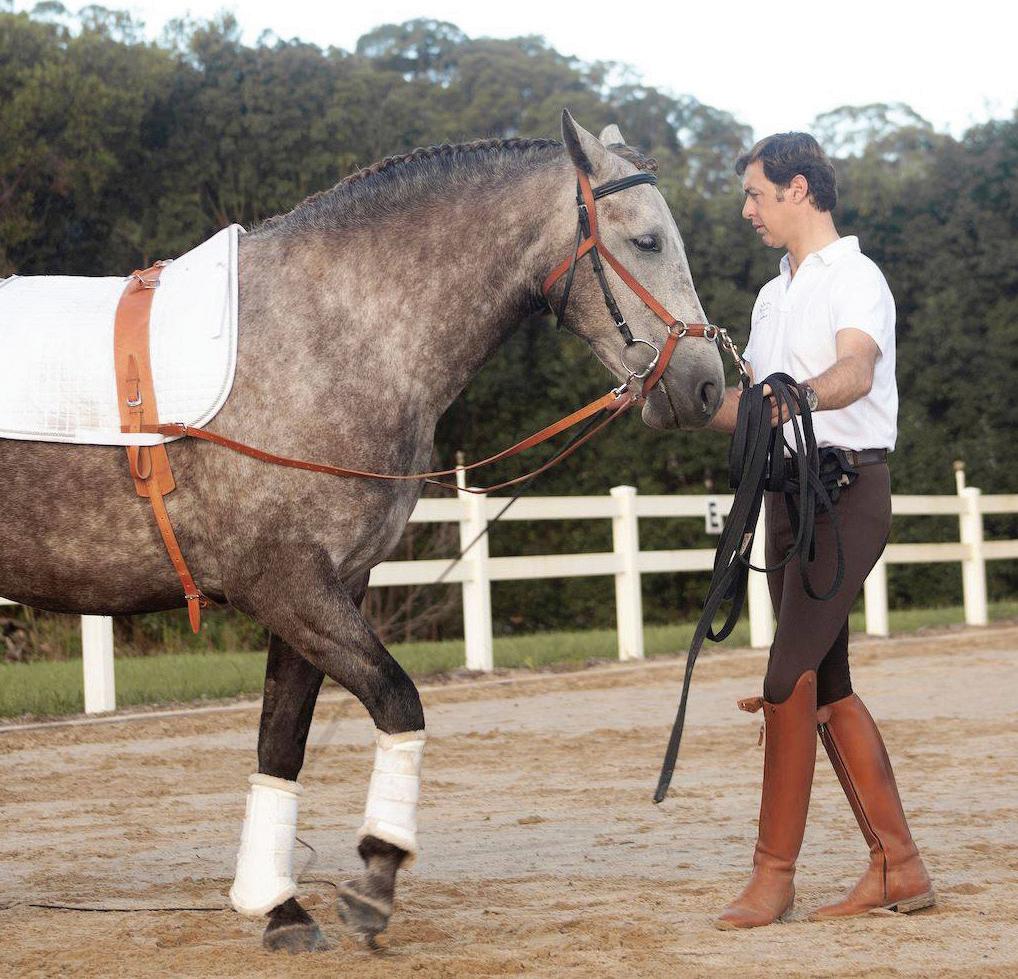
7 minute read
GIVE ME LAND, LOTS OF LAND
FEATURE
Give me land, lots of land and a starry sky above…
And, as the song goes, don’t fence her in! When self-confessed ‘townie’ Tara Shiels left the Blue Mountains for the Pilbara it was the beginning of a seven-month adventure, writes JANE CAMENS.
Not everybody thought it was a good idea when 18-year-old Tara Shiels confessed she had a desire to spend her gap year on a remote cattle property. After all, says Tara, “I’m absolutely a town girl, hot and cold water at the turn of a tap, a short walk to the shop, all those convenient things.” Where she’s been living for the past seven months, the nearest shop is a three-hour drive away, but still she says, that’s been a small price to pay for the extraordinary adventure she’s had.
Tara arrived at Yarrie Station, where they run 5,000 head of cattle on the 250,000 hectare (617,000) acre property, just before the start of the mustering season. The station, which is in the Pilbara region of Western Australia, has been in the Coppin family for five generations, and is now owned and managed by 34-year-old Annabelle Coppin, who purchased the property from her parents. The nearest town is Marble Bar, which is about 140 kilometres away, mostly on dirt roads.
Tara was one of three 18-year-olds chosen to work as station-hands, alongside a small crew, all under the age of 35, and from various parts of the world.
“Sometimes you just need something different,” she says. Station life certainly ful- filled that need. She found out quickly that she could, if she had to, swap spinach for bread, almond milk for long life milk, and tofu for red meat.
“At home mum would say if I ever got a flat tyre I should wait in the car and ring the NRMA for assistance. Out here in the Pilbara, good luck trying that! You might wait a lifetime,” she laughs. “It always seemed to happen on the days we had a million other things to do, but you just get on with it. Jack that car up, pull the tyre off, pray the spare was checked, get it on and away you go.’
Doing something like this had been in the back of her mind for four or five years, Tara tells me. “My grandmother, Fran Arbuthnot, worked on a country property when she first came out from England and when I was young she introduced me to horses. She was very supportive of me doing this, and really encouraged me to go for it. I’d love to inspire others to do this. In the past few years it’s become increasingly popular, especially for girls, and it truly is an amazing adventure.”
One of the deciding factors in Tara choosing Yarrie Station was that the station still uses horses for mustering. These days many places rely on motorbikes, trucks and helicopters. Yarrie, of course, uses all these but they’ve kept the horses on for mustering believing they cause the cattle less stress. Initially Tara rang a lot of cattle stations in the PilbaraKimberley region. “Eventually I got on to Annabelle,” she says. “I liked the way she advised me what to ask and look for.”
The days were long, with the crew getting up before sunrise, at around five o’clock. “Our work consisted of anything from mustering cattle to cleaning troughs, feeding hay, caring for calves, and so much in between,” she says.
If they were mustering, Tara and her new friends could be out for eight to 12 hours. “Before seven in the morning you might have a helicopter land next to your camp, have to shower from a bucket to wash off dirt, grease and cow poo, and cook breakfast on a camp fire. That was normal.” Talking to her right at the end of her stint on the station, she sounds almost nostalgic already!
The crew could camp out for up to a month at a time. “We spent less time in our beds than we did in our swags,” she says. “We set up camp with a marquee for a bit of shade and had a caravan for our dry stores and a small fridge.”
And then there were the horses. Tara talked about how impressive they were. “They’re all very strong and athletic, able to go for 40 kilometres a day. They’re the hardiest horses

Top: Tara on her ‘mate’ for seven months, Sinco. Bottom: A muster through an amazing landscape.

Tara (left) and Lauren were keen to get mustering.

After a long day’s mustering! From left to right: Rachael, Martha, Lauren and Tara.
I’ve ever seen. They keep going until the job’s done and they’re long days for the horses and riders.”
Tara’s ‘mate’ was a little mixed breed horse called Sinco. “You get attached to your mustering horse,” she says. “I spent a lot of time with Sinco. He’s a little champion, around 10 years old and only about 14.2 hands. He knew what he was doing. He’s often used to teach people how to muster. I rode other horses, but you form a bond with your little mate. I’ll miss him for sure.”
Tara was impressed also by Anne Coppin, Annabelle’s remarkable mother. “She’s an amazing horsewoman,” she tells me. “She’s what everyone aspires to be. She was on every muster, riding the whole day, by far the best horseperson out there.”
Among the images she’ll never forget are the sunrises and sunsets illuminating the tips of spinifex in the East Pilbara.
“It’s a lifestyle. Once you’re there you live and breathe the work. You have to love it, because there’s nowhere to hide if you don’t,” Tara says. “Luckily for me I couldn’t have ended up in a better place to learn. It’s amazing how far teamwork and a little compassion for each other can go. It was a big adjustment but I loved learning. It was exactly what I hoped it would be. I’d do it again in heartbeat.” If you are thinking of applying to work on a cattle station, Steph Coombes, the editor of a blog called Central Station where people working on cattle stations write about their lives, has some advice. She warns that the number of stations using horses is dwindling, so don’t assume you’ll be on horseback – always check.
She also recommends seriously thinking about the location you want, including the distance from the nearest town. “In WA you’ve got the Pilbara, Kimberley and southern rangelands. The Territory has the Top End, Victoria River District, Katherine, Barkly, and Central regions. Queensland – there’s the Gulf, Channel Country, and western Queensland etc. Each region is unique and differs from the next. You’ll be hard pressed to find big crews mustering on horseback in the West Australian southern rangelands, so if that’s what you’re after you might be better off on the Barkly,” she says.
Also the time spent mustering is variable, she explains. “Some places spread out mustering over nine months; others smash it out in six weeks,” she says. “Some places camp out, and others are always based at the homestead. Make sure you ask the questions and end up in a place that delivers the experiences you’re looking for.”
Steph advises: “If you’re on a gap year, your wage can be an issue. Working on a station means saving money on things like rent, groceries, and utilities, but you will still have expenses. No one wants to get half way through a season and realise they have to leave because they just can’t afford it. It really is horses for courses. There’s a station out there for everyone, it’s just about matching your expectations with what the station has to offer – do your research, find someone who is familiar with the area you wish to go to, read some Central Station blogs, and prepare yourself for the experience of a lifetime.”
To find a position that could be suitable, here is a place to start looking: • www.agworkforce.com.au • email: jobs@agworkforce.com.au • Facebook: agworkforce
Epona Park
Equine Bed and Breakfast, Long/Short Term Agistment/ Spelling, Equine related conferences/meeting rooms, extensive trail riding and arena hire.
Specialising in Classical Dressage and Working Equitation and in-hand work.


FOR YOUR HORSE


Double concrete wash bays with overhead hoses, 10 solid wood/gravel yards, private and shared paddocks all with Equibraid horse safe fencing, sturdy color bond shelters, auto water troughs in all paddocks (gravelled), 80ac of cleared riding trails from green to black runs, 12 minutes by float to horse friendly beaches, 60x20 ELD sand arena, round yard. Safe float parking.
FOR YOU
Large queen sized rooms with couch, wardrobe and beautifully appointed bathrooms. Air-conditioned with WiFi, stunning outdoor kitchen leading to large swimming pool and cabana, near to great surfing beaches and cafes, surfboards/ paddleboards etc available
THE EXPERIENCE
Luxurious accommodation for you and your horse and a perfect stopover for those travelling to competitions or just for a little getaway.
Agistment can be private paddock or shared and from self-care through to fullcare.










